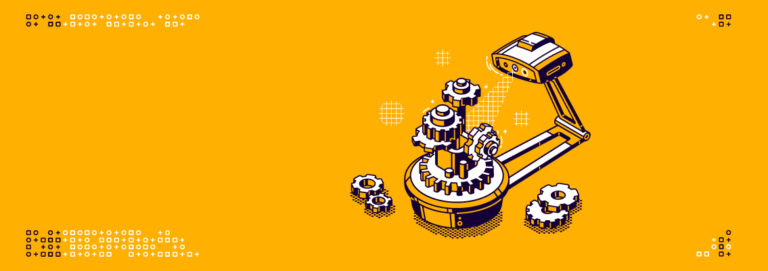Manufacturers of machines are obliged to carry out a risk assessment to determine the health and safety requirements applicable to the machine. Thereby the limits of the machinery have to be defined within the risk analysis. As a machine cannot offer the required safety under all conceivable applications, the intended use must be defined. This is done by defining the basic conditions for the intended use. At the same time, the legislator also requires that situations of reasonably foreseeable misuse be taken into account.
But what is a foreseeable misuse under the standard of “reason”?
The Machinery Directive 2006/42/EC defines in Annex I No. 1.1.1 the “intended use” as the use of machinery in accordance with the information provided in the instructions for use.
In addition, the safety standard EN ISO 12100:2010 Safety of machinery ― General principles for
design under No. 5.3.2 specifies the following aspects to be taken into account:
- the different machine operating modes and different possibilities for user intervention,
- the field of application of the machine by persons with different characteristics
- the anticipated levels of training, experience or ability of users
- the consideration of other persons who may be exposed to the hazards with the machine
In addition to the “intended use”, hazards that may occur during foreseeable use must also be taken into account. This foreseeable use can go beyond the intended purpose.
Foreseeable misuse
The Machinery Directive refers in Annex I No. 1.1.1 to “reasonably foreseeable misuse” as “the use of machinery in a way not intended in the instructions for use, but which may result from readily predictable human behaviour“.
The safety standard EN ISO 12100:2010 also refers in no. 5.3.2 to “reasonably foreseeable misuse”.
Also the General Product Safety Directive 2001/95/EC refers in Article 2 (b) to “‘safe product’ shall mean any product which, under normal or reasonably foreseeable conditions of use including duration and, where applicable, putting into service, installation and maintenance requirements, does not present any risk or only the minimum risks compatible with the product’s use, considered to be acceptable and consistent with a high level of protection for the safety and health of persons“.
The definition of foreseeable use is a very vague legal concept. The reason why the legislator nevertheless takes this into account can best be explained by the fact that certain situations occurring in everyday life should be taken into account in the design of the product. At the same time, however, the stretchable term is intended to prevent an excessive culture of compensatory as in the USA.
In its essence, it is about an apparent misuse, which can be “reasonably” assumed on objective assessment. The safety standard EN ISO 12100:2010 lists some examples of this in No. 5.4 c):
- loss of control of the machine by the operator (especially for hand-held or mobile machines),
- reflex behaviour of a person in case of malfunction, incident or failure during the use of the machine,
- behaviour resulting from lack of concentration or carelessness,
- behaviour resulting from taking the “line of least resistance” in carrying out a task,
- behaviour resulting from pressures to keep the machine running in all circumstances, and
- behaviour of certain persons (for example, children, disabled persons)
However, obvious misuse such as using a lawnmower to trim the hedge or deliberate misuse such as inhaling a technical solvent as a narcotic should not be taken into account. Similarly, the intentional, costly and time-consuming overriding of protective devices is probably also behavior that is not reasonably foreseeable.
Products certainly do not have to be designed to be “foolproof”, but the safety assessment must nevertheless be based on the knowledge and skills of the persons identified within the limits of use.
Usually, a manufacturer only has to consider the behavior or misconduct that can be considered “socially normal”. This may be based on a person who behaves in a lawful and responsible manner.
Ultimately, however, it will always depend on which area of responsibility a certain behavior is assigned to in a specific case. If, for example, protective devices can be easily overridden and at the same time safety measures would have prevented the behavior without great difficulty, the manufacturer may still be more likely to be responsible.
All in all, it is a matter of a delimitation of external responsibility in the sense of a security obligation by the manufacturer and a self-responsibility of the user. Practical assistance is perhaps provided here by the Guide to application of the Machinery Directive (edition 2.2, October 2019) in § 172, which refers in particular to the manufacturer’s knowledge of previous experience in the use of machines of the same type or similar machines, accident investigations and knowledge of human behaviour.
Some examples of possible misuse
- Use of materials not specified in the operating instructions
- Non-compliance with the permissible parameters for processing the respective material
- Maintenance work on an unsecured machine
- Non-compliance with the operating instructions
- Placing objects on the work surface
- Processing of materials that are too large or too heavy
- Processing of materials that are not or insufficiently fixed
- Processing of unsuitable materials such as steel
- Use of a tool system not intended for the material or machine
- Operating the machine without the safety devices provided
- Use of modified module and tool systems
- Installation of spare parts and use of accessories and equipment not approved by the manufacturer
- Non-compliance with maintenance instructions
- Non-observance of signs of wear and damage
- Service work by untrained or unauthorized personnel
- Operating the machine although the operating instructions are incomplete or not available in the local language
- Deliberate or careless handling of the machine during operation
- Bypassing or changing the safety devices (e.g. because the user is hindered in his work by the safety device)
